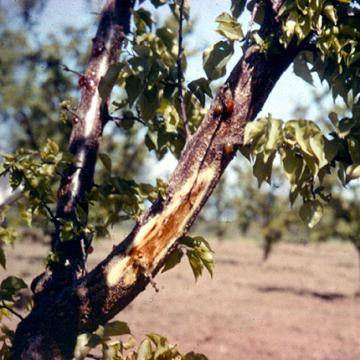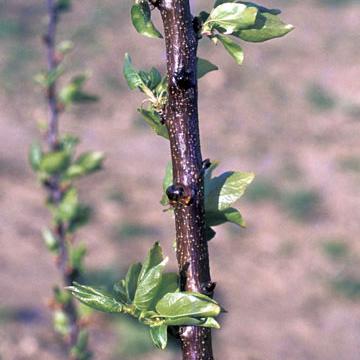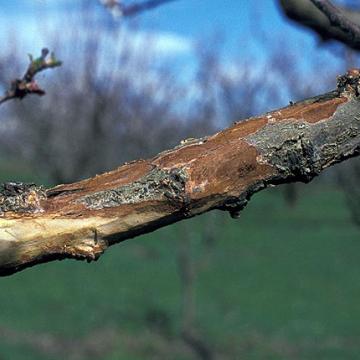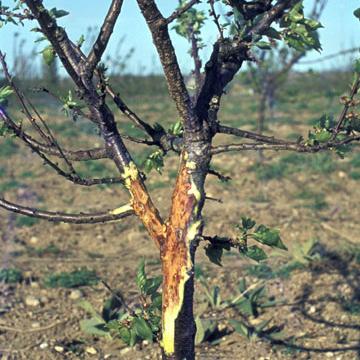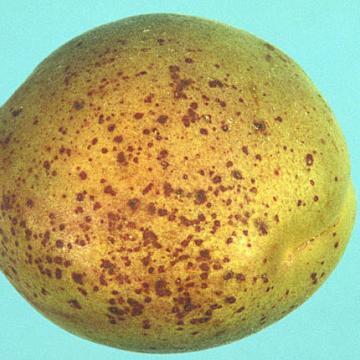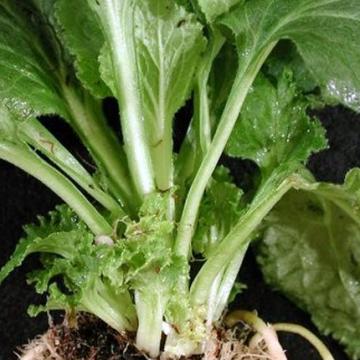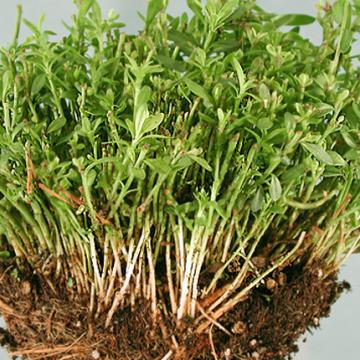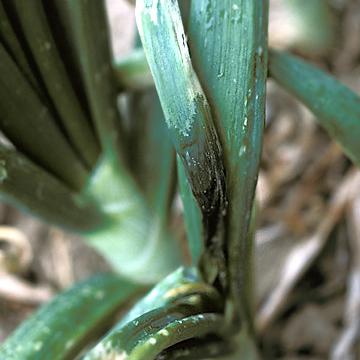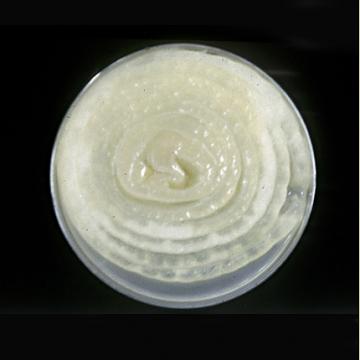DISEASE: Bacterial canker and blast
HOST: Apricot
Apricot with typical reddish brown-discolored tissues beneath the bark and gumming around infected areas.
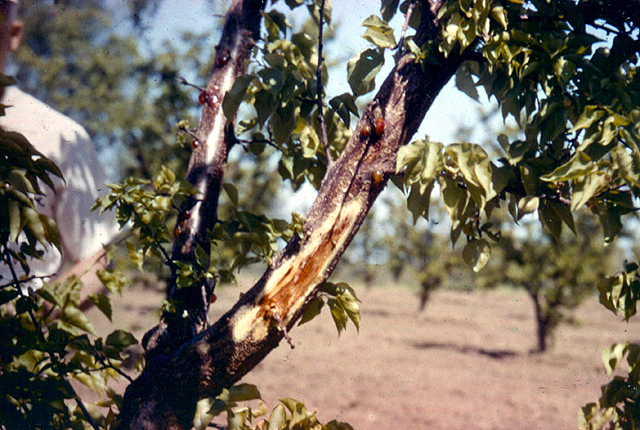
Bacterial canker and blast | Apricot
DISEASE: Bacterial canker and blast
HOST: Apricot (Prunus armeniaca)
PATHOGEN: Pseudomonas syringae pv. syringae
SOURCE: S. Sampson, M. Shurtleff
DISEASE: Bacterial canker and blast
HOST: Apricot
Young infected twig with droplets of bacterial ooze on stem.
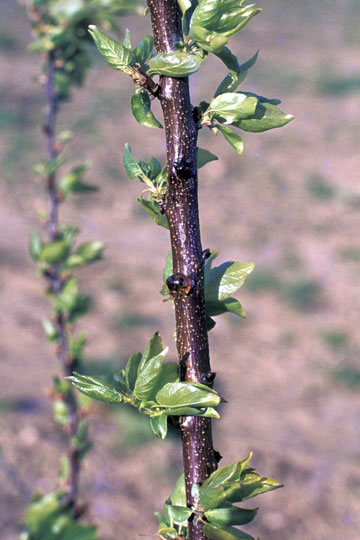
Bacterial canker and blast | Apricot
DISEASE: Bacterial canker and blast
HOST: Apricot (Prunus armeniaca 'Moorpark')
PATHOGEN: Pseudomonas syringae pv. syringae
SOURCE: J. Young
DISEASE: Bacterial canker and blast
HOST: Apricot
Bacterial canker has many symptoms. Typical symptoms are brown, sometimes reddish brown, internal tissues and rough, cracked bark.
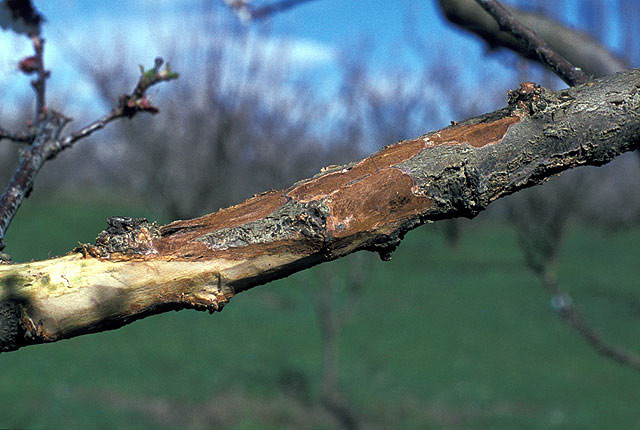
Bacterial canker and blast | Apricot
DISEASE: Bacterial canker and blast
HOST: Apricot (Prunus armeniaca 'Moorpark')
PATHOGEN: Pseudomonas syringae pv. syringae
SOURCE: J. Young
DISEASE: Bacterial canker and blast
HOST: Apricot
Infected apricot with sparse foliage (some twigs with no foliage) and a discolored area exposed where bark was removed.
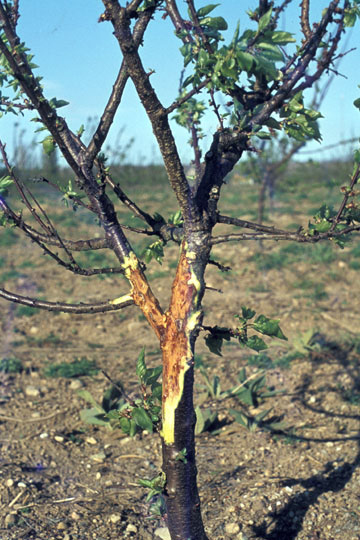
Bacterial canker and blast | Apricot
DISEASE: Bacterial canker and blast
HOST: Apricot (Prunus armeniaca 'Moorpark')
PATHOGEN: Pseudomonas syringae pv. syringae
SOURCE: J. Young
DISEASE: Bacterial canker and blast
HOST: Apricot
Fruit spot phase with numerous reddish necrotic spots.
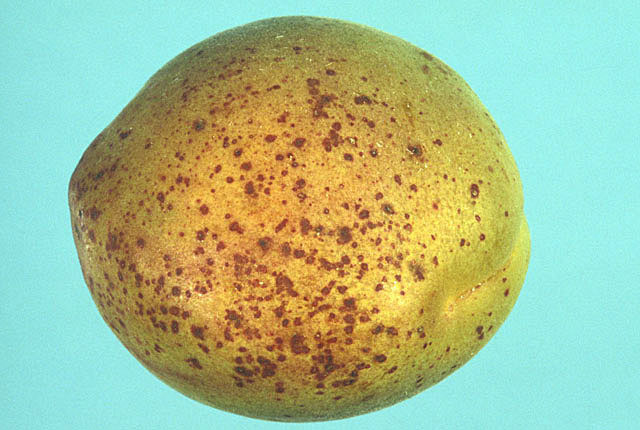
Bacterial canker and blast | Apricot
DISEASE: Bacterial canker and blast
HOST: Apricot (Prunus armeniaca 'Moorpark')
PATHOGEN: Pseudomonas syringae pv. syringae
SOURCE: J. Young
DISEASE: Bacterial fasciation (Shoot proliferation)
HOST: Campanula
Overproduction of new shoots and short, thickened, distorted stems.
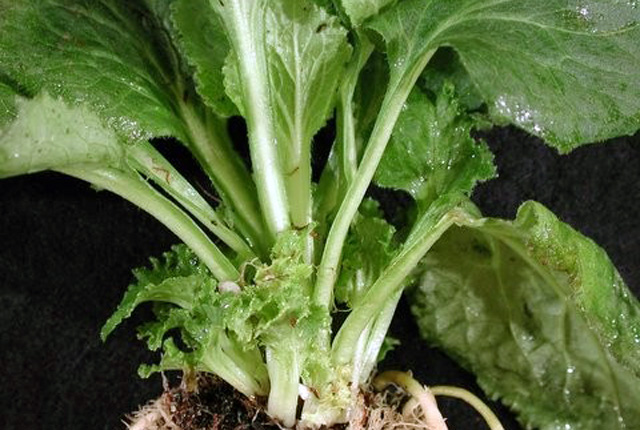
Bacterial fasciation (Shoot proliferation) | Campanula
DISEASE: Bacterial fasciation (Shoot proliferation)
HOST: Campanula (Campanula sp.)
PATHOGEN: Rhodococcus fascians
SOURCE: M. Putnam
DISEASE: Bacterial fasciation (Shoot proliferation)
HOST: Candytuft
The disease causes production of multiple shoots.
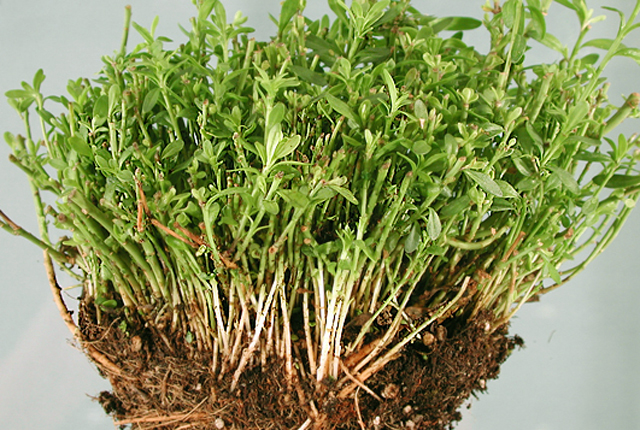
Bacterial fasciation (Shoot proliferation) | Candytuft
DISEASE: Bacterial fasciation (Shoot proliferation)
HOST: Candytuft (Iberis sp.)
PATHOGEN: Rhodococcus fascians
SOURCE: M. Putnam
DISEASE: Bacterial flower stalk and leaf necrosis
HOST: Onion
Dark, rotted areas of stalk and leaves caused by systemic invasion of the pathogen.
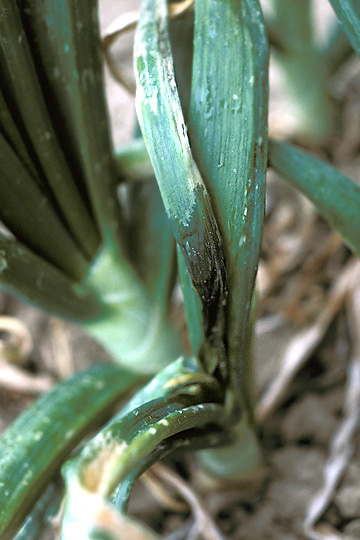
Bacterial flower stalk and leaf necrosis | Onion
DISEASE: Bacterial flower stalk and leaf necrosis
HOST: Onion (Allium cepa)
PATHOGEN: Pseudomonas marginalis pv. marginalis
SOURCE: S. Mohan
DISEASE: Bacterial flower stalk and leaf necrosis
HOST: Onion
Gray-brown rot of onion after inoculation. Disease starts as small, water-soaked lesions that later develop into slimy, gray-brown rot. The disease progresses downward from the stalk and may rot the entire bulb.
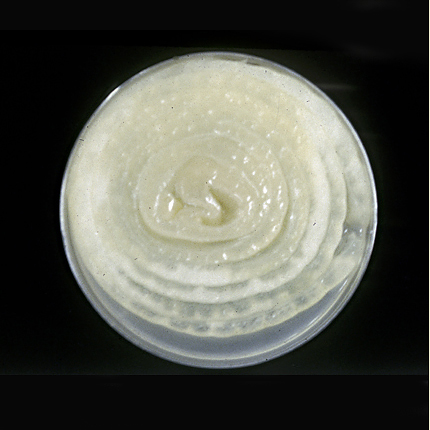
Bacterial flower stalk and leaf necrosis | Onion
DISEASE: Bacterial flower stalk and leaf necrosis
HOST: Onion (Allium cepa)
PATHOGEN: Pseudomonas marginalis pv. marginalis
SOURCE: R. Gitaitis


